Advances in early 20th-century technology resulted in widespread mechanisation of the military during World War I. The United States Army deployed four-wheel drive trucks in that war, supplied by Four Wheel Drive Auto Company (FWD) and the Thomas B. Jeffery Company. By the eve of World War II the United States Department of War had determined it needed a light, cross-country reconnaissance vehicle.
Anxious to have one in time for America's entry into World War II, the U.S. Army solicited proposals from domestic automobile manufacturers for a replacement for its existing, aging light motor vehicles, mainly motorcycles and sidecars, and some Ford Model T's.[4][5] Marmon-Herrington presented five 4×4 Fords in 1937, and American Bantam delivered three Austin roadsters in 1938.[6] Recognizing the need to create standard specifications, the Army formalized its requirements on July 11, 1940, and submitted them to 135 U.S. automotive manufacturers.
By now the war was under way in Europe, so the Army's need was urgent and demanding: Bids were to be received by July 22, a span of just eleven days. Manufacturers were given 49 days to submit their first prototype and 75 days for completion of 70 test vehicles. The Army's Ordnance Technical Committee specifications were equally demanding: the vehicle would be four-wheel drive, have a crew of three on a wheelbase of no more than 75 in (191 cm) – that was later upped to 80 in (203 cm) – and track no more than 47 in (119 cm), feature a fold-down windshield, 660 lb (299 kg) payload and be powered by an engine capable of 85 lb·ft (115 N·m) of torque. The most daunting demand, however, was an empty weight of no more than 1,300 lb (590 kg).
Initially, only American Bantam Car Company and Willys-Overland Motors entered the competition; Ford Motor Company joined later.[7] Though Willys-Overland was the low bidder, Bantam received the bid, being the only company committing to deliver a pilot model in 49 days and production examples in 75. Under the leadership of designer Karl Probst, Bantam built their first prototype, dubbed the "Blitz Buggy" (and in retrospect "Old Number One"), and delivered it to the Army vehicle test center at Camp Holabird, Maryland on September 23, 1940. This presented Army officials with the first of what eventually evolved into the World War II U.S. Army Jeeps: the Willys MB and Ford GPW.
Since Bantam did not have the production capacity or fiscal stability to deliver on the scale needed by the War Department, the other two bidders, Ford and Willys, were encouraged to complete their own pilot models for testing. The contract for the new reconnaissance car was to be determined by trials. As testing of the Bantam prototype took place from September 27 to October 16, Ford and Willys technical representatives present at Holabird were given ample opportunity to study the vehicle's performance. Moreover, in order to expedite production, the War Department forwarded the Bantam blueprints to Ford and Willys, claiming the government owned the design. Bantam did not dispute this move due to its precarious financial situation. By November 1940, Ford and Willys each submitted prototypes to compete with the Bantam in the Army's trials. The pilot models, the Willys Quad and the Ford Pygmy, turned out very similar to each other and were joined in testing by Bantam's entry, now evolved into a Mark II called the BRC 60. By then the U.S. and its armed forces were already under such pressure that all three cars were declared acceptable and orders for 1,500 units per company were given for field testing. At this time it was acknowledged the original weight limit (which Bantam had ignored) was unrealistic, and it was raised to 2,160 lb (980 kg).
For these respective pre-production runs, each vehicle received revisions and a new name. Bantam's became the BRC 40. Production began on March 31, 1941, with a total of 2,605 built up to December 6.[8] As the company could not meet the Army's demand for 75 Jeeps a day, production contracts were also awarded to Willys and to Ford.[9]
The Army's new ¼-ton truck was rigorously tested for proving.
After reducing the vehicle's weight by 240 pounds, Willys changed the designation to "MA" for "Military" model "A". The Fords went into production as "GP", with "G" for a "Government" type contract and "P" commonly used by Ford to designate any passenger car with a wheelbase of 80 in (203 cm).[10]
By July 1941, the War Department desired to standardize and decided to select a single manufacturer to supply them with the next order for 16,000 vehicles. Willys won the contract mostly due to its more powerful engine (the "Go Devil"), which soldiers raved about, and its lower cost and silhouette. The design features in the Bantam and Ford entries which represented an improvement over Willys's design were then incorporated into the Willys car, moving it from an "A" designation to "B", thus the "MB" nomenclature. Most notable was a flat wide hood, adapted from Ford GP.
By October 1941, it became apparent Willys-Overland could not keep up with the production demand and Ford was contracted to produce them as well. The Ford car was then designated GPW, with the "W" referring to the "Willys" licensed design. During World War II, Willys produced 363,000 Jeeps and Ford some 280,000. Approximately 51,000 were exported to the U.S.S.R. under the Lend-Lease program.
Specifications
Spotlights
- ColonelStriker 7.4 years ago
- Awsomur 7.4 years ago
General Characteristics
- Created On Windows
- Wingspan 6.4ft (2.0m)
- Length 13.8ft (4.2m)
- Height 6.2ft (1.9m)
- Empty Weight 2,708lbs (1,228kg)
- Loaded Weight 2,841lbs (1,288kg)
Performance
- Wing Loading 8,447.1lbs/ft2 (41,242.5kg/m2)
- Wing Area 0.3ft2 (0.0m2)
- Drag Points 3369
Parts
- Number of Parts 174
- Control Surfaces 0
- Performance Cost 550

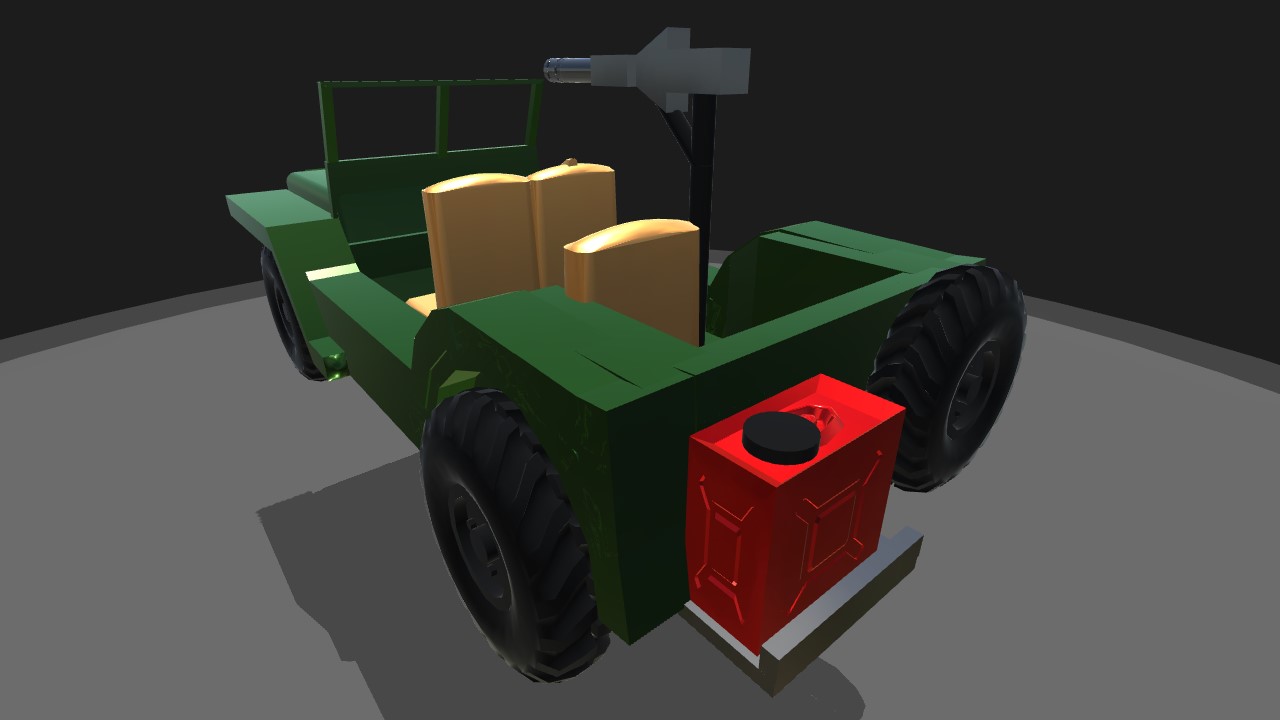
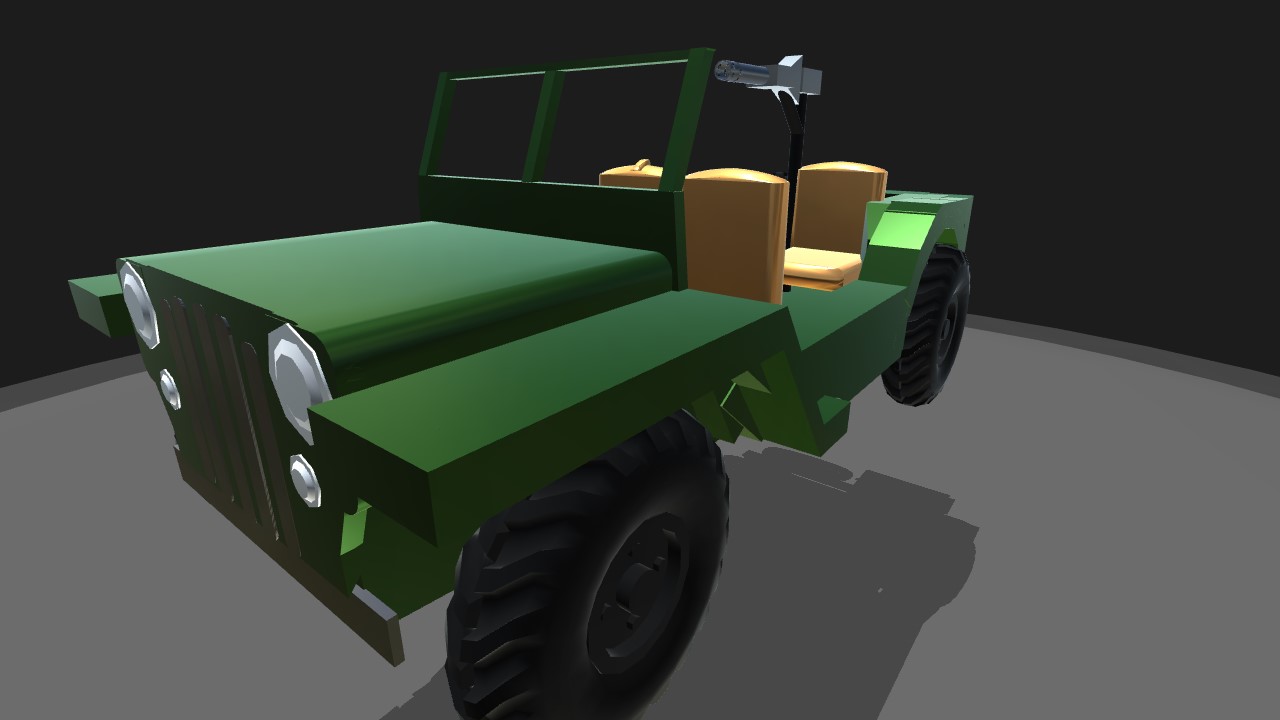
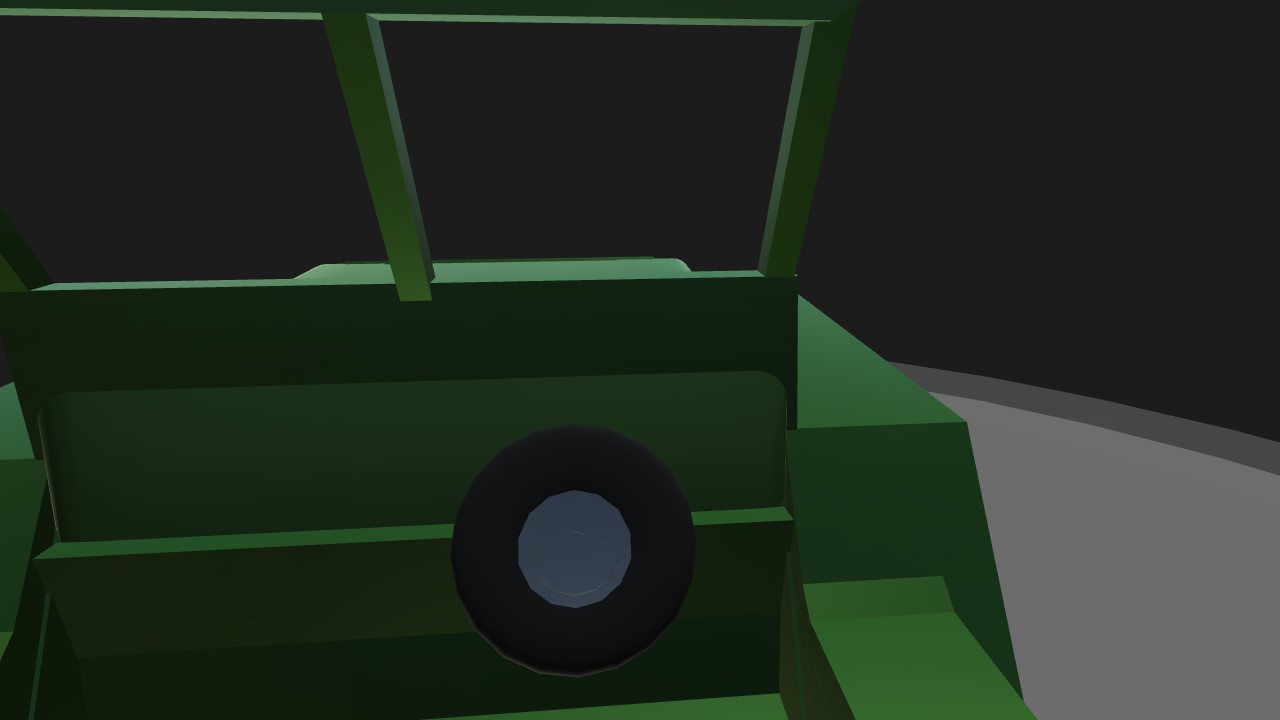
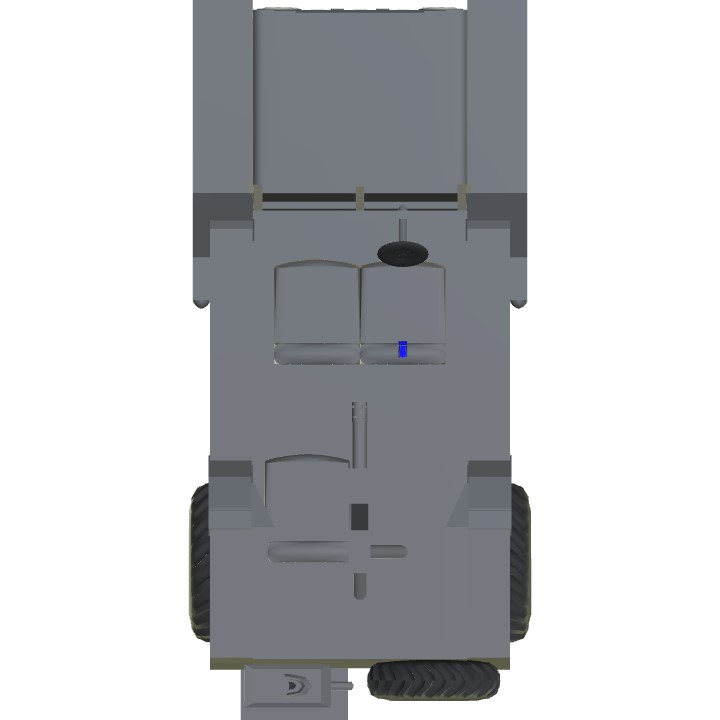
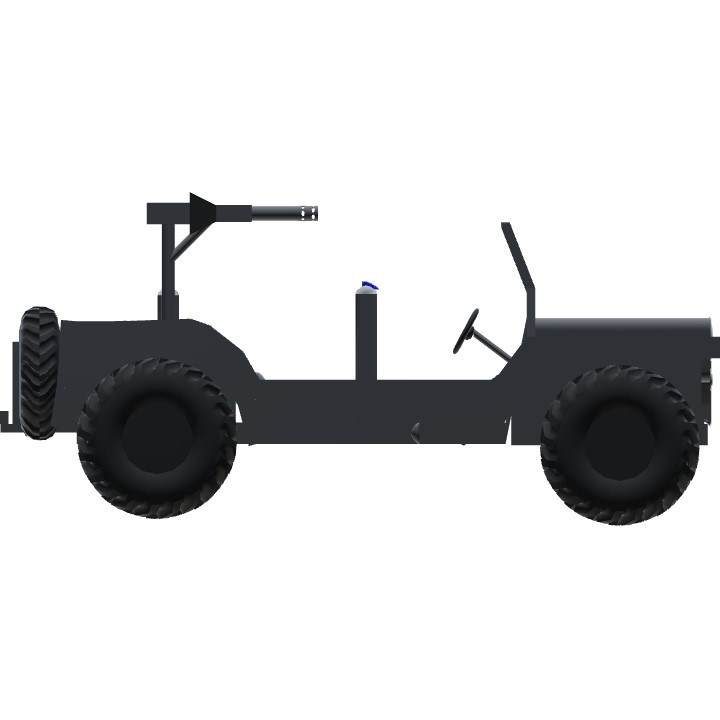
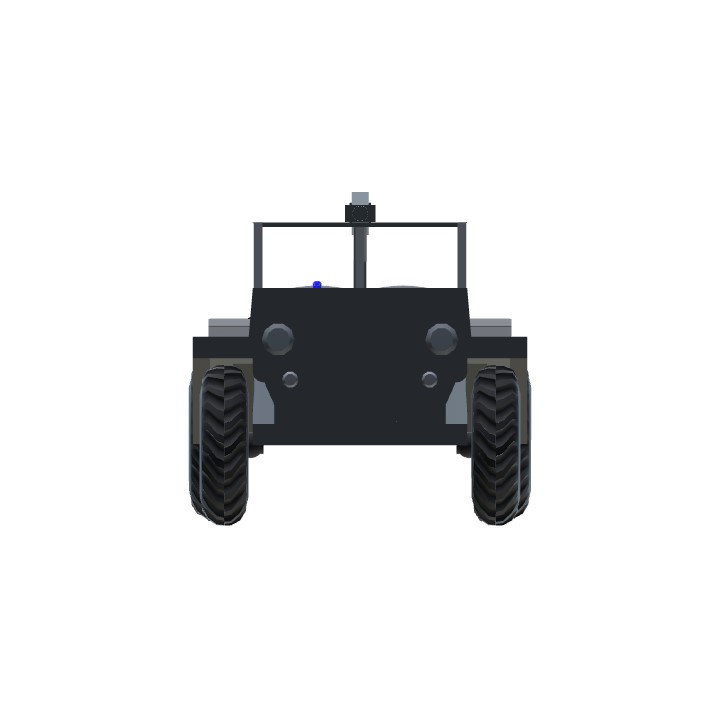
@Jetpackturtle here
@RailfanEthan K
@TakicraftCorporation What? I don't remember ever hearing back from you on that...
@Jetpackturtle cool, but what happened with the version what i made for you? Something was wrong with it, i went too far or something?
@Awsomur yep
I have now seen the definition of a nitpick. @RailfanEthan
Quick fix: This looks more like the 50s Ford M38 which was used in the Korean War. A 60s one would look like this
@Awsomur Thanks!
@DarthAbhinav I know m8, I got sick of bad proportions and tough steering wheels, so I was like "Da heck, I'm just gonna take it behind the barn and shoot it."
No I’m serious, this is really good. Love the fuel tank on the back too. @Jetpackturtle
@Awsomur Ok... wasn't expecting that response. Thanks dude!
This is perfect, mate! @Jetpackturtle
@destroyerP
@DarthAbhinav
@Awsomur Here ya go, I'm sick of it.